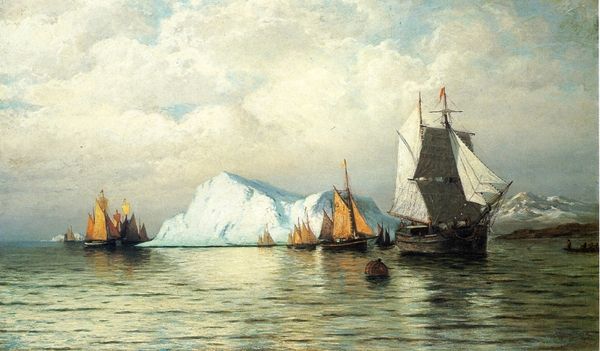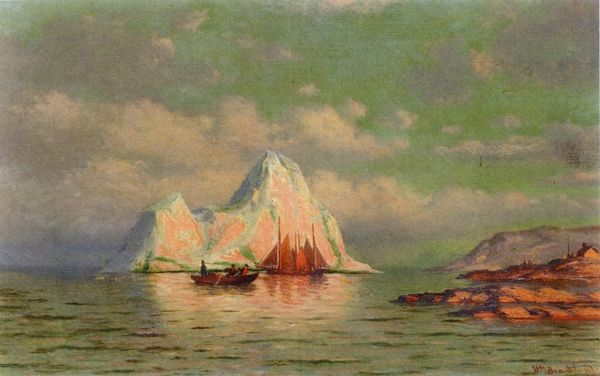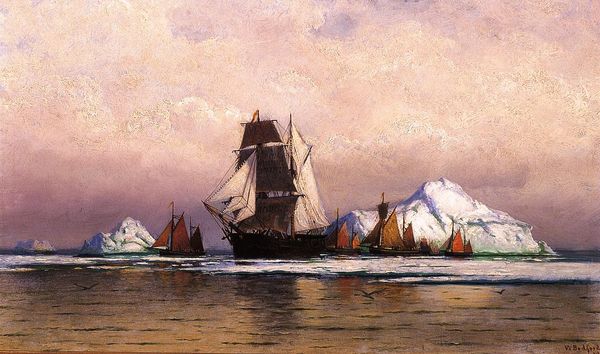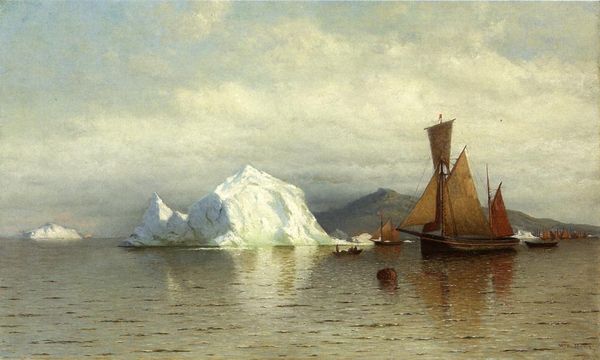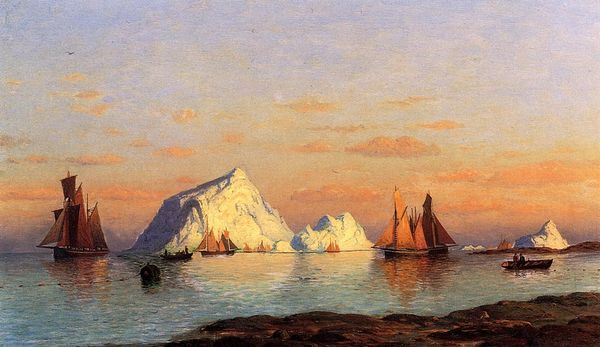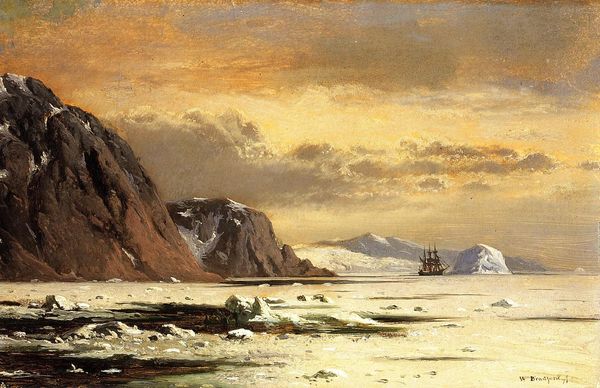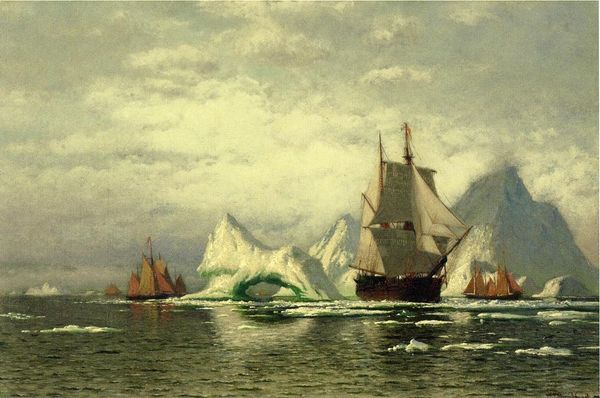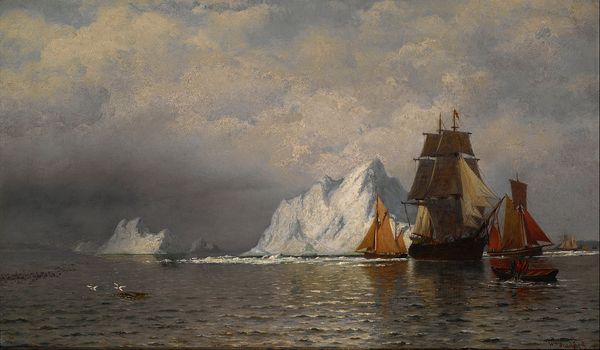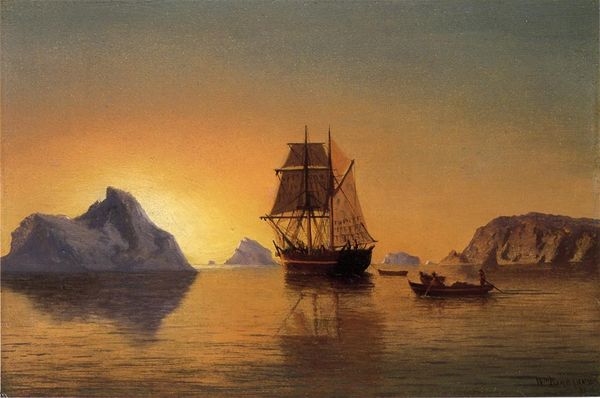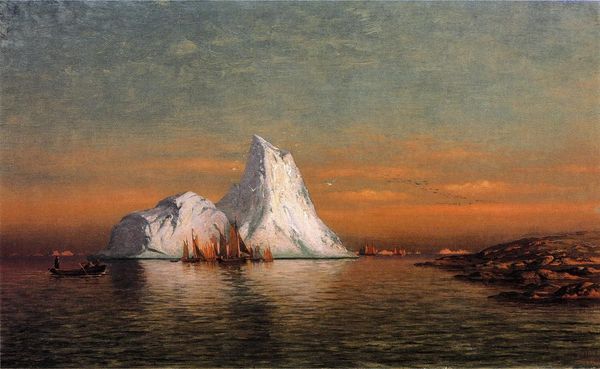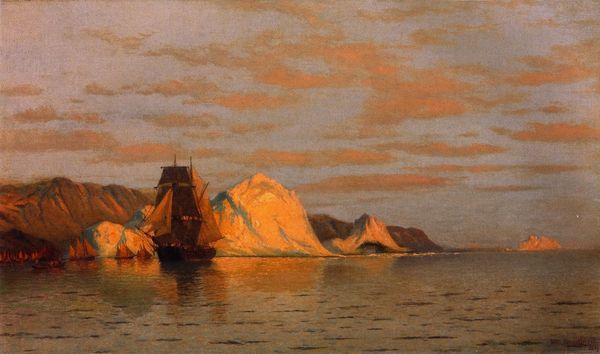
Copyright: Public domain
Curator: Looking at William Bradford's 1883 oil painting, "Icebergs", I immediately feel the cold. Editor: It really has that arctic bite, doesn't it? Almost makes you want to reach for a sweater! There's something about the light reflecting off the ice that creates a specific mood. A serene, slightly melancholy, sort of stillness. Curator: Indeed. It’s crucial to remember the historical context here. Bradford was deeply invested in representing the Arctic voyages. These weren't simply scenic landscapes; they were depictions of an area undergoing rapid transformation due to human activity. We are viewing more than just 'pretty' icebergs; it's about colonial expansion, resource extraction, and indigenous erasure. Editor: Wow, okay, that's deep. I mean, I was just thinking how the painting almost flattens the scale. The boats look tiny against those massive ice formations, which, makes one reflect, at how small we all are. Curator: That sense of insignificance in the face of nature absolutely resonates within Romanticism, but in our present era, where the melting ice caps contribute significantly to the rise of sea levels that endanger many nations, it makes you reconsider ideas of our planet’s fragility and precarity. How the natural world isn't some separate "landscape", it's everything. Editor: Exactly! And there's the little dabs of color too – like those touches of rusty orange in the sails, the little hint of pale emerald hugging the iceberg, reflecting in the water – they’re beautiful. The ice glows, almost ethereal, as a soft halo that contrasts sharply to the darker rocky terrain and small structures ashore. This creates an interesting effect; on the one hand nature prevails and seems overpowering and, on the other, humans keep settling it, making their mark, staking their claim to it, irrespective of the looming giant icebergs and freezing waters. Curator: And let's not forget the impact of artistic choices here. Bradford’s detailed, almost photograph-like quality speaks directly to a cultural obsession with ‘truth’ and ‘objectivity’ that also ignores the often-violent impact of the so-called discoveries during those Arctic voyages. His rendering aligns directly with scientific modes of representing those Arctic zones. Editor: True! I think about how things once were. As a last note I think this canvas, even with it´s historical load, helps me to think about where we are today. Maybe an uncomfortable, chilly little mirror to our times?
Comments
No comments
Be the first to comment and join the conversation on the ultimate creative platform.
